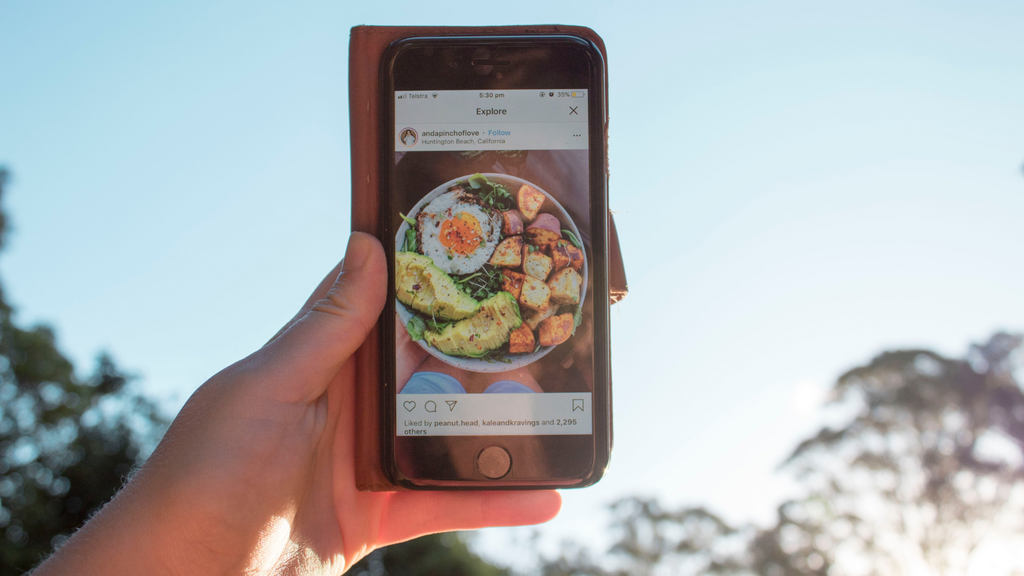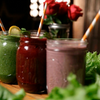Our Favorite Nutritionists on Instagram

Firstly we’d like to say several words about what a healthy diet is and what principles should a pro nutritionist hold on to. Each professional nutritionist develops their own nutrition system, according to which they build the diet for clients. Nevertheless, there are a number of principles that are adhered to by almost all nutritionists without exception. They are the basis of a healthy diet without harm to the body.
The basis of a balanced healthy diet should primarily lie in plant-based products. It is also very important that the diet is varied and based on the health status of a particular person.
The salt content in the consumed products is reduced to 1 teaspoon per day, so you also need to monitor the amount of canned and smoked foods eaten. Competent nutritionists recommend using only iodized salt to further prevent the development of a common pathology of iodine deficiency.
About 100-200 g of fruits and vegetables should be included in each meal, while the amount of fruit eaten should be inferior to the amount of vegetables. Plant foods are the best source of vitamins, minerals and antioxidants, so it is recommended to give preference to vitamins from natural sources, excluding the intake of dietary supplements and tablets.
The amount of alcohol should not exceed 2 servings per day, that is, 10 g of pure alcoholic beverage. This is largely due to the fact that alcohol leads to a deficiency of minerals and vitamins, the presence of which in the body is especially important during the diet.
The diet should be rich in calcium, so it should include a large amount of milk, fish or green leafy vegetables to choose from.
The diet must necessarily be low in sugar (up to 10%). Although sugar-containing foods are an excellent source of energy, they are not considered components of a healthy diet. Also, all sweet drinks must be replaced with clean water.
Fatty meat products should be replaced with legumes, fish and poultry can be consumed in small quantities. Pates and sausages should be completely excluded from the diet.
The amount of fat in the diet (including fat-containing meat and milk) should be 15-20% of the daily number of calories. In addition, the amount of vegetable fat also needs to be reduced, and fried food should be replaced with boiled. Modern nutritionists pay special attention to fatty acids. The most useful are monounsaturated acids, which are found in olive and peanut oil.
A well–known, but often ignored rule of healthy eating is the use of a large amount of clean water. The daily norm is 2-3 liters, but still should be calculated individually.
The optimal weight of each person is calculated individually. Ideally, this indicator should correspond to the established framework with an index from 18.5 to 24.9. A personal nutritionist calculates the individual indicators of the client, taking into account the level of physical activity, health status, and only after that makes a diet. Changes in diet and physical activity are made gradually, since the loss of a maximum of 800 g per week is considered a safe rate of weight loss.
Also, you should try to keep your cortisol levels as low as possible. Stress hormones are leading to our body trying to store as much fat as possible, plus, those are inducing the processes of aging and cell death, which are heavily impacting every system of organs. There are many ways to combat stress, including good 8 hour sleep and regular light training sessions, however, in some cases we need additional help. This is when special gadgets can come in handy – for example, TouchPoints, which use alternating vibrations to retrain our body’s reactions to stress.
There are so many nutrition blogs that it is almost impossible to understand the flow of recommendations on your own. “What exactly should I do to be healthy and slim? Give up gluten? Urgently arrange a detox for myself? Or still not eating after six?”
All of those questions are going to be answered in the next few paragraphs.
How to understand whether a blogger can be trusted
- Examine the profile header
The profile description is a mini resume of the blog owner. Professionals – nutritionists, endocrinologists, nutritionists and fitness trainers – are more trustworthy than people who simply lead an active lifestyle and publish dietary recipes. Also check the number of subscribers – maybe in the beginning of their career they needed to buy Instagram followers and that’s completely okay, but after that they must have gotten way more subscribers to prove that their content is actually valuable.
- Study the content of the posts
Competent bloggers rely not on personal experience and a couple of books they have read, but on research. Links to authoritative sources are important, and the pros do not neglect them. You need to look for proflinks in the comments under the main post or in the photo in the "carousel".
By the way, about research. They come in different qualities – you can (and should) check the authenticity and relevance yourself. The most reliable are systematic reviews of several studies (preferably, these studies should be conducted on humans), and not the opinion of one or more experts. Always pay attention to the age of research – the newer, the better.
- Pay attention to the submission of information
A real nutrition specialist talks about the pros and cons of different types of nutrition, gives verified information about products and their effect on the body. Based on objective data, everyone can independently decide what to eat so as not to harm themselves.
The best nutritionists on Instagram
Nutritionist Ryan Carter @livevitae
In the account of the certified healthy lifestyle coach and future nutritionist Ryan Carter, you can find simple useful recipes, comparisons of different products and life hacks to improve the quality of meals. For example, Ryan clearly shows how to reduce or increase the calorie content of a breakfast made from the same ingredients. The main simple and understandable technique for losing weight is to give preference to greens and vegetables.
Physiologist Josh Cortis @themealprepmanual
Another account in which they show in very colorful and detailed ways how to properly manage the calorie content of meals. The author of the page — certified physiologist Josh Cortis — clearly explains how certain ingredients help to reduce and increase the calorie content of dishes. He also examines how different types of meat and cereals affect the ratio of proteins, fats and carbohydrates in similar meals.
Recipe author Liz Hwangbo @lizhwangbo
On her page, blogger and author of useful recipes Liz Hwangbo demonstrates how to make traditional dishes more useful. The main principle is to find time for cooking at home. For example, Liz tells and shows how to quickly cook a healthy alternative to a burger, French fries and pancakes at home. At the same time, you can also find an analysis of products with nutrients and calories in her account, which helps you shop in the store more consciously.
Nutritionist Rachel Paul @collegenutritionist
Rachel Paul is a certified nutritionist who relies on simple and healthy meals. She publishes recipes for delicious breakfasts, lunches and dinners, which do not require a lot of time and hundreds of ingredients to prepare. At the same time, Rachel Paul regularly posts posts in which she shows how to make familiar dishes more useful. For example, a post about how to make rolls greener and less caloric has gone viral.
Blogger Werner Shvich @vernou
This account has an infinite number of ideas for simple and healthy meals. This page will be especially interesting for those who work in an office and believe that such a lifestyle is difficult to combine with proper nutrition. Deliciously cooked and photographed healthy food in containers is a great motivation to start eating healthier foods.
MindBodyGreen @mindbodygreen
Do not forget that a huge proportion of progress in any endeavor depends on knowledge. According to the creators of the account, they try to combine the soul and science in their work. In Mindbodygreen publications, they speak in extremely simple language about important and interesting things. For example, about what vegans get protein from or how to increase the nutrient content in the diet. But the main distinguishing feature of the page is illustrations in pastel colors, which make the information clearer and its reading more pleasant. Actually, if you’re a beginner diet blogger yourself, you should take this hack and use it in your profile; as well as a chance to buy real Instagram followers – if you’re serious about your page’s development, of course.
Kevin Curry @fitmencook
This smiling chef will teach you to eat healthy, but therefore no less delicious foods. His dishes will seem appetizing even to the most devoted fans of fast food. Usually Kevin shares recipes right in the cooking process. He publishes them in short IGTV videos and, of course, does not forget to season the food with a portion of jokes!
Base Body Babes @basebodybabes
Felicia and Diana are charming fitness lovers from Australia. They knock you down not only with their spectacular appearance, but also with the intensity of personal training. Online girls talk about weight exercises, give tips on the technique of performance and regularly share recipes for healthy dishes. And for those who lack faith in their strength and the right attitude, Base Body Babes will help you find them with the help of inspiring reflections under the photo.
Sarah Britton @mynewroots
She reveals the secrets of a balanced vegetarian diet. Sarah's gastronomic life hacks are full of non-banal ideas about the diversity of the plant diet. For example, a girl teaches how to cook golden milk, fried ice cream, blue spirulina latte and much more. Bright photos of dishes invariably cheer up subscribers and motivate them to approach creatively not only to cooking, but also to life in general.
Ella Mills @deliciouslyella
Once Ella, known on Instagram as Deliciously Ella, was inspired by the book "Chinese Research" by Colin Campbell and is now a very popular supporter of "clean eating" with a million subscribers. The nutritionist publishes a huge number of recipes consisting of fruits, vegetables and legumes, accompanied by useful comments and quotes. It is noteworthy that Ella is an opponent of gluten and lactose, so there are practically no recipes with milk and cereals in the blog.
Amelia Freer @ameliafreer
The world-famous nutritionist calls on his account @ameliafreer to treat nutrition consciously. Instead of strict dietary restrictions, Amelia recommends approaching each meal thoughtfully, eating more slowly and making sure that certain foods are really necessary, and not a reward in a stressful situation. Of course, the ingredients of each dish are also important. For her followers, Amelia publishes not only recipes for all kinds of dishes, focusing on healthy desserts and sweets, but also sends motivational messages that will inspire even the laziest.
Author’s bio: Anastasia Yakovleva, certified therapist and rehabilitologist, healthy lifestyle expert.




